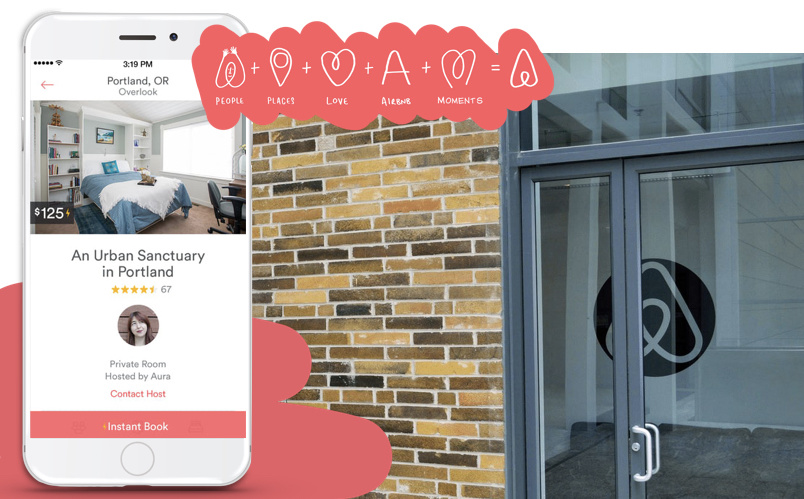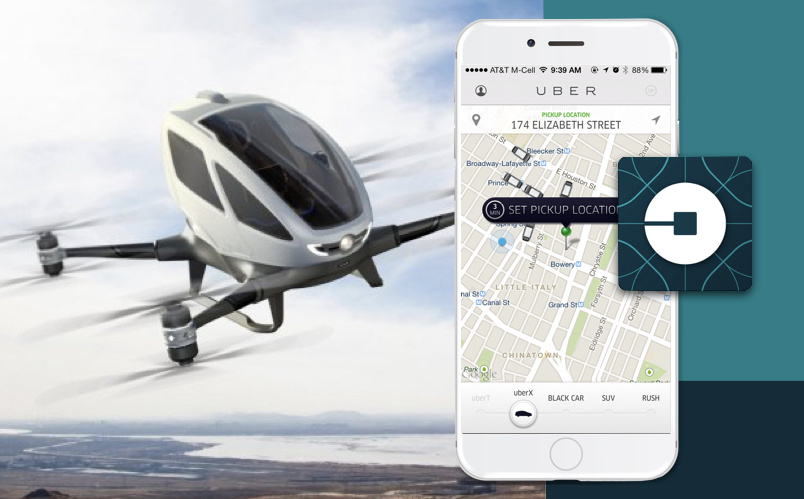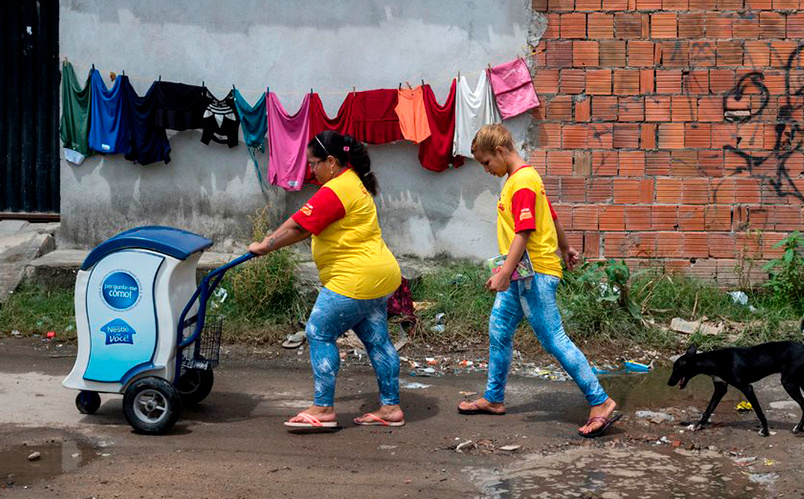France
Paris
Switch to your local agency
Retour au menu
On going into detail, it emerges that the reality is more complex than a phrase created to amaze, both in terms of the online origin of success (Netflix began by sending DVDs by post), the physical presence (Amazon has opened an experimental shop in Seattle), and procurement strategies (Uber has purchased an articulated lorry start-up more for the autonomous driving technology than for the lorries themselves).
The new giants which have developed online, overturning their markets by replicating a business model founded on the non-ownership of assets, seem now to be looking with interest at the purchase of some form of physical property.
But this is not the case for everyone. In what direction are these companies moving nowadays?

Amazon and Alibaba are investing in the purchase of physical store chains. A few months ago, Amazon purchased Whole Foods (specialised in organic food), while Alibaba has acquired a significant share in Sun Art Retail, the Chinese version of Wal-Mart. Rather than a show of aggression towards the offline market, these strategies seem to be a form of u0022prototypeu0022 aimed at the definitive integration of online and offline experiences.

In the US, Airbnb has begun investing in a number of apartment complexes, built from scratch and managed according to new methods, obviously perfect for residents who will be hosts, but who are, above all, frequent travellers themselves.

Uber has tested vehicle purchasing in Singapore, with poor success. It is, however, investing in revolutionary flying taxis which it will presumably have to own.
(The question also remains on how to manage in the future an asset-free model with driverless vehicles. Will the owner provide the self-driving car, working for Uber yet staying at home?)

For Netflix, considering the way in which it works, the dynamics have been similar, but without ever abandoning the immaterial: explosive penetration of the market and investment of earnings to free itself from dependence on entertainment leaders – in this case through the production of original material.
With regards to physical assets, is a macro trend for these actions emerging?
Certainly, the strategies differ for the various markets, and are applied in differing contexts, but none of these companies seems to be focused on snatching up assets depreciated by competitors.
There is no Airbnb buying up Holiday Inn or Uber taking over taxi companies being sold off. On the contrary, they all seem to be concentrating on strategies which are focused on a distant future, as though the inability of old-style competitors to adapt, their consequential disappearance, and even the uselessness of the goods which they are now founded on seem to be so taken for granted as to almost not even merit attention.
There are two lessons to be learned from all of this:
Even in the offline world, where until yesterday the definition of relationships of strength and services was in the hands of the traditional large-scale players, the rules are, nowadays, ever-increasingly set by the asset-light disruptors.
These all seem to be driven by the same rule which many very large-scale companies, now no longer in existence, have instead ignored: think about reinventing yourself before it becomes necessary.
Alberto Gianera
Strategic Designer
Referenze:
What does constructing a brand identity mean? Form a personality for the brand through a visual and iconographic language, effective communication, or even the design of every single touchpoint: these are all elements which determine the perception and reputation of the brand from the point of view of its public. A perception which is not only rational but also profoundly emotive and instinctive, on which the approval and the consequent success of the brand depends.
The visual image is, however, not the only answer.
How can I get my brand onto the market? How can I reach my consumers? Through which channels and actions? Through what forms is the brand perceived by its consumers? How can we reach the heads (and hearts) of users? The go-to-market strategy is the answer. Answering these questions means planning a strategy aimed at constructing a relationship with our clients. According to the combination of factors chosen for implementation, brand perception by users varies considerably and, consequently, the brand identity is also affected.
Brand identity is therefore not (only) the result of its visual image but also of the combination of all channels and actions which are carried out by the brand in order to construct a relationship with its clients.
The various combinations create differing brand perceptions and, consequently, this significantly influences the brand identity.

Vorwerk Folletto
The German company entered the Italian market as far back as 1938 with a new sales technique, the door-to-door model, a technique which is still in widespread use for a number of product types. The main value that the brand wanted to project to the consumer was (and is) loyalty. The brand uses the strength of the relationship economy, based on authentic human relationships, which generate a positive feeling of trust in consumers, in order to position and differentiate its products on the competitive scene. The product that it sells costs more than those of its competitors, and it is often difficult to understand all its functions or use all of its modes. A demonstration at home, accompanied step by step by interaction with the sales representative, is fundamental in order to convince and impress the target. Consequentially, this generates a bond of trust with the seller and the brand it represents.

Nestlé Brasile
The same door-to-door sales strategy is applied by the multinational company Nestlé in the main Brazilian cities, which uses a network of micro-distributors and individual sales representatives who, with a cart, manage to reach the most inaccessible areas of the city. By using this strategy, the brand has managed to provide employment for a large number of women from the poorest areas, and to sell its products in difficult-to-reach or completely inaccessible areas. Furthermore, by selling food at low prices, the brand has been well-received by the population, creating a feeling of trust and reciprocal support. A brand which is “close” to you, not only via that which it communicates, but also in the way it reaches you wherever you are.

Supreme
One of the currently most fashionable and talked-about strategies is that of the “drop”. Supreme applies this sales model by releasing new products every Thursday morning in its online store and its five physical stores world-wide. This strategy has generated an unprecedented level of physical and virtual traffic, approximately 1 billion views in one drop in 2016, increasing the traffic on its website by 16,800% and creating queues in front of the stores days before. This strategy, accompanied by a communication campaign which transmits the same values of exclusivity, has permitted the brand to achieve this elite, inaccessible and extremely fascinating image.
The experience of the three case studies shows how the go-to-market strategy, the choice of channels used to reach one’s clients, the method of interaction with them, the frequency of the relationship and the key actions carried out by the brand, are an integral part of the very identity of the brand. Being a loyal brand comes through the human and profound relationship with those who sell the product (in the case of Folletto); brands which respond to daily needs are those which reach you wherever you are (Nestlé); and lastly, being exclusive is not only a question of gold and sequins, but of intelligent sales strategies (Supreme).
The way I contact and address my clients is the very heart of my brand identity.
Irene Serafica
Strategic Design Lead
Subscribe and receive CBA’s latest news directly in your inbox!
© CBA DESIGN 2021 – CB’A Srl 05940620965
Privacy Overview